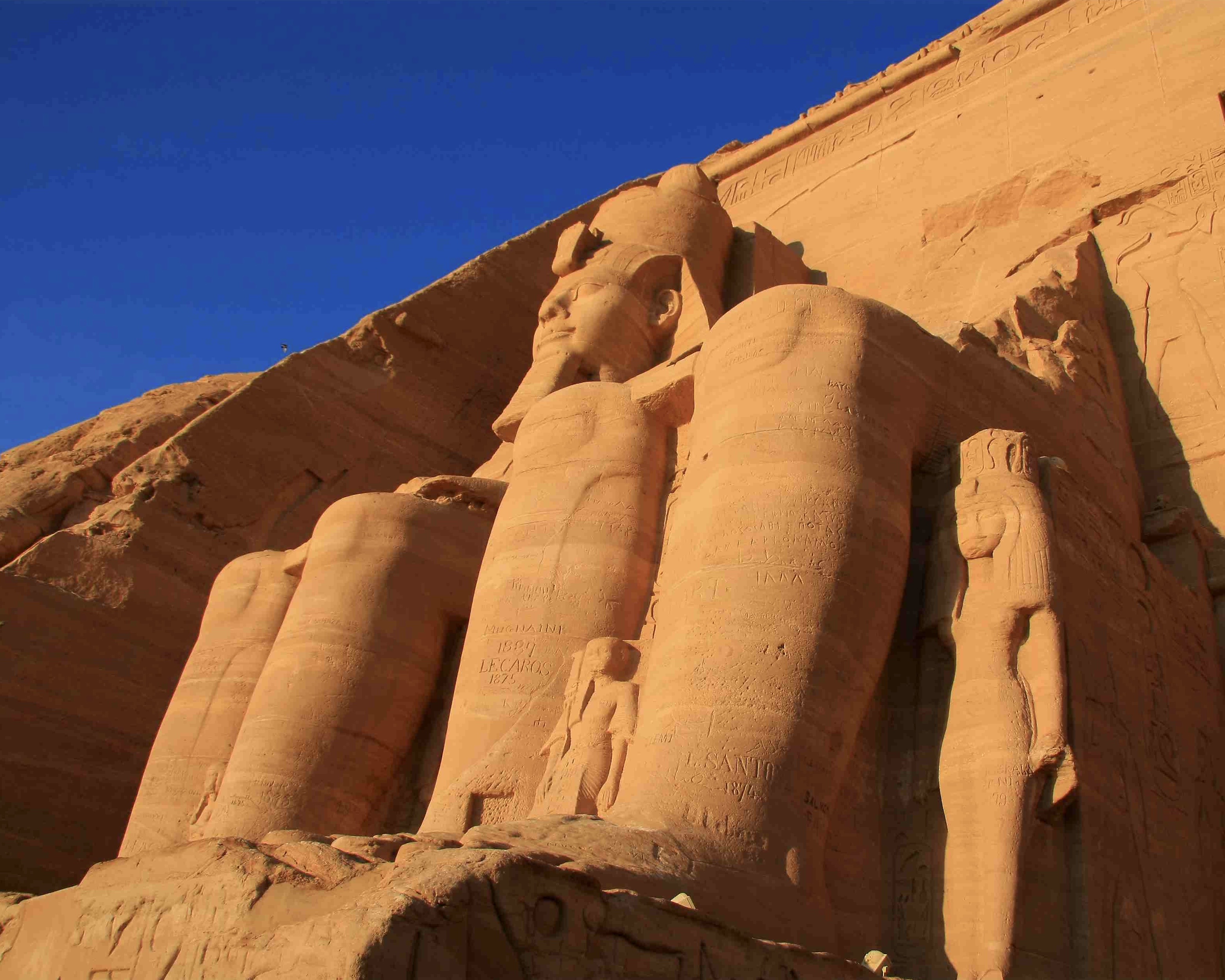
The Mystery of King Tutankhamun Tomb and His Fame
Tutankhamun Tomb: A Royal Mystery That Time Could Not Erase.
Egypt is home to one of the greatest civilizations in history, the ancient Egyptian civilization, which dates back to around 3000 B.C. Its rich history has played a vital role in shaping human civilization, leaving behind remarkable achievements in architecture, art, and governance. Among its many rulers, one of the most well-known is King Tutankhamun, the young pharaoh whose tomb discovery captivated the world.
The Boy King Who Became a Legend
King Tutankhamun—the name itself conjures images of gold, mystery, and the wonders of ancient Egypt. But why, out of all the pharaohs who ruled the land of the Nile, is Tutankhamun so famous? He wasn’t the most powerful, didn’t rule the longest, and wasn’t even the most historically significant. His lasting fame is the result of a combination of historical circumstance, archaeological serendipity, and a dash of good old-fashioned public fascination.
A Tutankhamun Tomb Untouched:
Tutankhamun’s fame isn’t because he was a great ruler; it's because of what happened long after his death. In 1922, archaeologist Howard Carter stumbled upon something incredible: The Tutankhamun tomb, nearly untouched after thousands of years. Unlike most royal tombs, which had been looted over time, this one remained almost perfectly intact. It wasn’t overflowing with endless piles of gold, but what it did hold was breathtaking, more than 5,000 artifacts, including his iconic gold burial mask, elaborate sarcophagi, beautifully crafted furniture, glittering jewelry, and even everyday objects that offered a rare glimpse into his life.
The discovery shocked the world, and the sheer beauty of these treasures sparked an obsession with ancient Egypt that still captivates people today.
Who is King Tutankhamun?
Tutankhamun was the son of Akhenaten and a woman known as the Younger Lady. He was born in Amarna and later married his half-sister, Ankhesenamun, the daughter of Akhenaten and Nefertiti. He also had several siblings, including Ankhesenamun, Neferneferuaten Tasherit, Smenkhkare, Meritaten, Neferneferure, Setepenre, and Meketaten.
Before Tutankhamun’s reign, Egypt was going through a period of major upheaval. His father, originally known as Amenhotep IV, changed his name to Akhenaten in honor of the sun god Aten. He also named his son Tutankhaten, meaning “living image of Aten.” However, after Akhenaten’s death, when Tutankhamun took the throne, he changed his name to reflect a return to Egypt’s traditional beliefs. His new name, Tutankhamun, meant “living image of Amun,” the god of air and one of Egypt’s most powerful deities.
A King Tutankhamun Shrouded in Mystery:
Tutankhamun's life itself is shrouded in mystery. He ascended to the throne at a young age, around nine years old, and died unexpectedly at about 18. The circumstances surrounding his death remain a topic of debate among historians and archaeologists. Was it murder? An illness? The lack of definitive answers has fueled speculation and intrigue for decades, adding to the allure of the boy king. The "curse of Tutankhamun," popularized by sensationalist media, further contributed to the mystique, even though it's largely dismissed by scholars.
The Power of Gold:
Let’s be honest, gold has a way of mesmerizing people. The sheer amount of it found in Tutankhamun’s tomb, especially his breathtaking gold mask, instantly captured the world’s imagination. These glittering treasures became symbols of ancient Egypt’s grandeur, and Tutankhamun himself became the face of this fascinating civilization. More than just beautiful artifacts, the gold objects were proof of the immense wealth and power of the pharaohs, securing Tut’s place in history and popular culture.
A Media Sensation for King Tutankhamun Tomb:
The discovery of Tutankhamun’s tomb came at the perfect moment, right as mass media was on the rise. News of the find spread rapidly through newspapers, photographs, and later, radio and film, capturing the world’s attention. The dramatic excavation, the breathtaking treasures, and the lingering mystery of the boy king made for a compelling story that fascinated audiences everywhere. Tutankhamun quickly became a global icon, and his image has since appeared in countless books, movies, and merchandise, cementing his place in history and popular culture.
A Lasting Legacy:
King Tut’s fame has endured for nearly a century because his story still captivates people. He embodies the mystery and allure of ancient Egypt, a world of pharaohs, pyramids, and hidden treasures. The discovery of his tomb provided invaluable insights into Egyptian culture, art, and religion, deepening our understanding of this ancient civilization. While many pharaohs were more powerful or influential, it was Tutankhamun, the boy king whose tomb remained untouched for centuries, who captured the world’s imagination and became a legend.
How old was King Tutankhamun died?
King Tutankhamun was laid to rest in his tomb in the Valley of the Kings in Luxor. He died around 1327 B.C. at the young age of 18 or 19, but the exact cause of his death remains uncertain. Some believe he was assassinated, pointing to evidence of a broken thigh bone, while others suggest he may have died from malaria or another devastating disease. Another theory proposes that his chest, missing its ribs and sternum, was crushed in an accident, possibly a fall from his chariot. While the true cause of his death is still debated, one fact remains clear: Tutankhamun died far too young.
When did King Tutankhamun take over the rule of Egypt?
Tutankhamun inherited the throne around the age of 9, ruling from approximately 1327 to 1318 B.C. during the late Eighteenth Dynasty of ancient Egypt. He lived during a crucial transitional period, following the reign of Akhenaten, who had attempted to unify Egypt’s gods under a single deity, Aten. During Tutankhamun’s rule, the traditional polytheistic worship of multiple gods was restored, and new temples were built to honor them.
Why is King Tutankhamun so famous?
Tutankhamun tomb is the only royal tomb in the Valley of the Kings to have been discovered relatively intact. It was uncovered in 1922 by British archaeologist Howard Carter and, despite its modest size and decoration, contained an astonishing wealth of treasures. Inside, approximately 5,000 artifacts were found, all remarkably well-preserved, offering a glimpse into royal life in ancient Egypt. These included a golden death mask, clothing, toys, chairs, jewelry, cosmetics, furniture, incense, vessels made from various materials, weapons, and chariots. The tomb’s golden artifacts and other treasures have become iconic symbols of Egypt. Even today, the discovery of Tutankhamun’s tomb remains one of the most significant archaeological finds in history, solidifying his enduring fame.
King Tut’s fame has endured for nearly a century because his story continues to captivate people. He embodies the intrigue and grandeur of ancient Egypt, a world of mighty pharaohs, towering pyramids, and hidden treasures. The discovery of his tomb offered invaluable insights into Egyptian culture, art, and religion, deepening our understanding of this ancient civilization. While other pharaohs may have wielded more power or left a greater historical mark, it was Tutankhamun, the boy king, whose tomb remained untouched for centuries, who captured the world’s imagination and became a legend. His story is a testament to the enduring power of history, the allure of the unknown, and the timeless magic of ancient Egypt.
Related Articles

Hidden Egypt Sightseeing
Once Egypt is mentioned as a fantastic travel destination, we think about Pyramids, Egyptian Museum and Bazaar Khan El Khalili. However, there are many more places to visit. Egypt never ceases to amaze anyone who visits. Egypt is home to the world’s greatest civilization and unique historical sites.Hidden gems in Egypt that you might not miss during your Egypt Travel Package.

Planning a Trip to Egypt
Planning a trip to Egypt offers not just a vacation, but an adventure into history, culture, and wonders that have fascinated humanity for millennia.

Start your adventure in Egypt
As the cradle of one of the world's oldest civilizations, Egypt continues to captivate the hearts and minds of travelers from across the globe. From the iconic pyramids of Giza to the serene waters of the Nile, and the bustling bazaars of Cairo, Egypt offers a wealth of history, culture, and adventure for intrepid explorers. Let's embark on a magical journey through this captivating land and uncover the treasures that await those who venture to Egypt.
